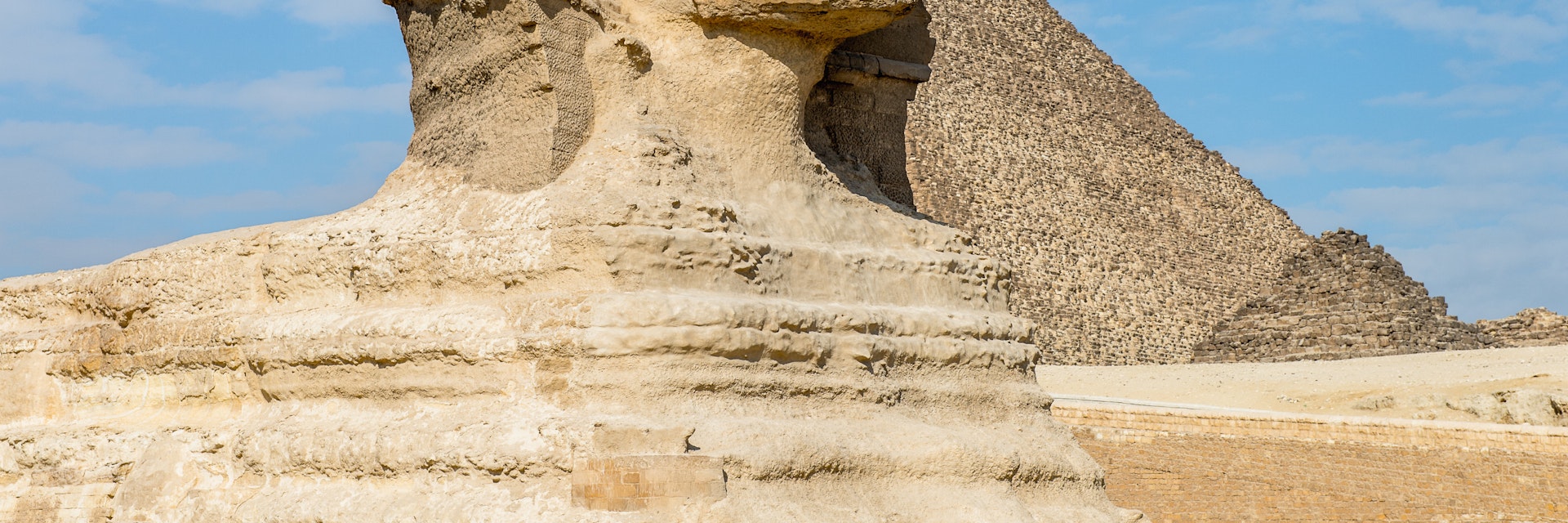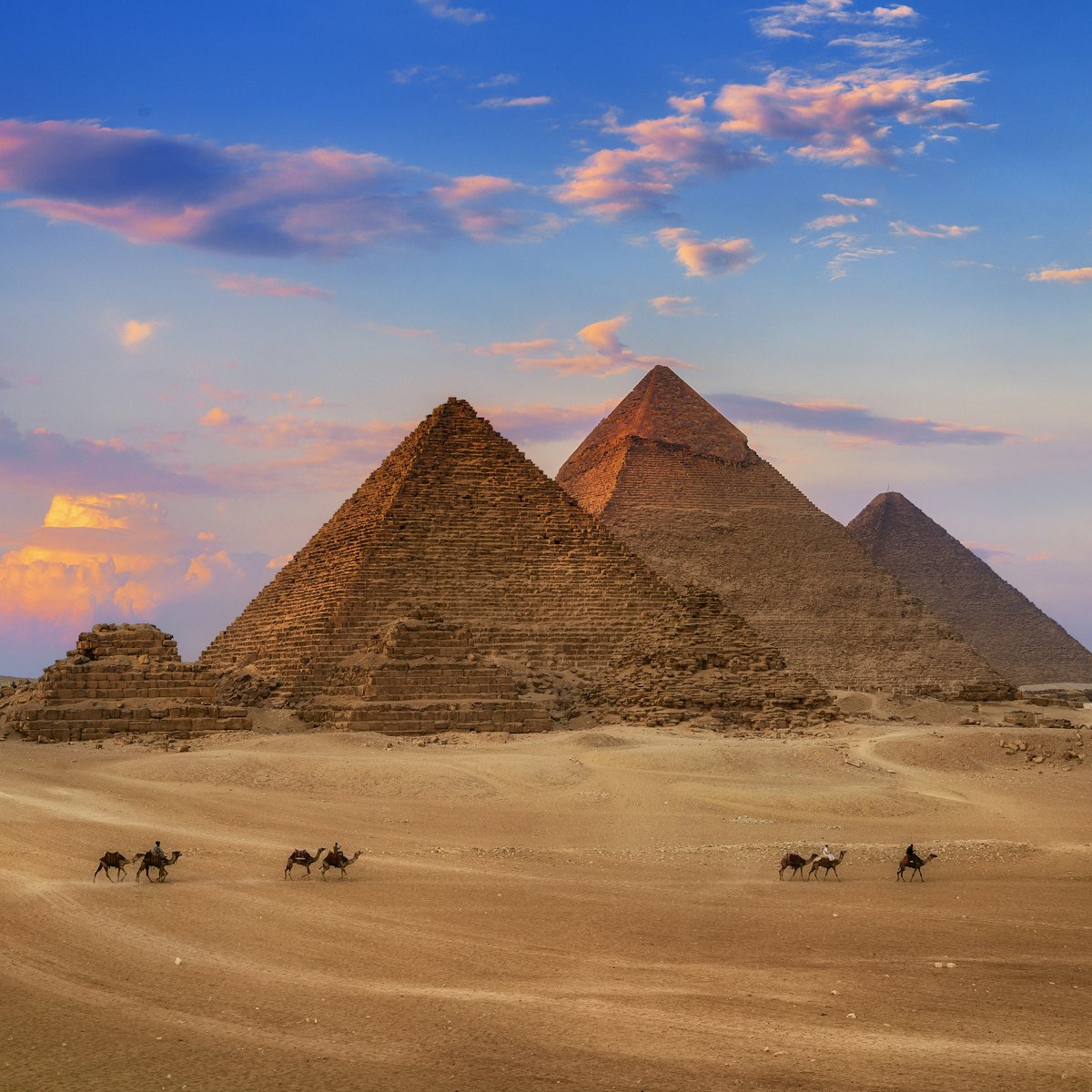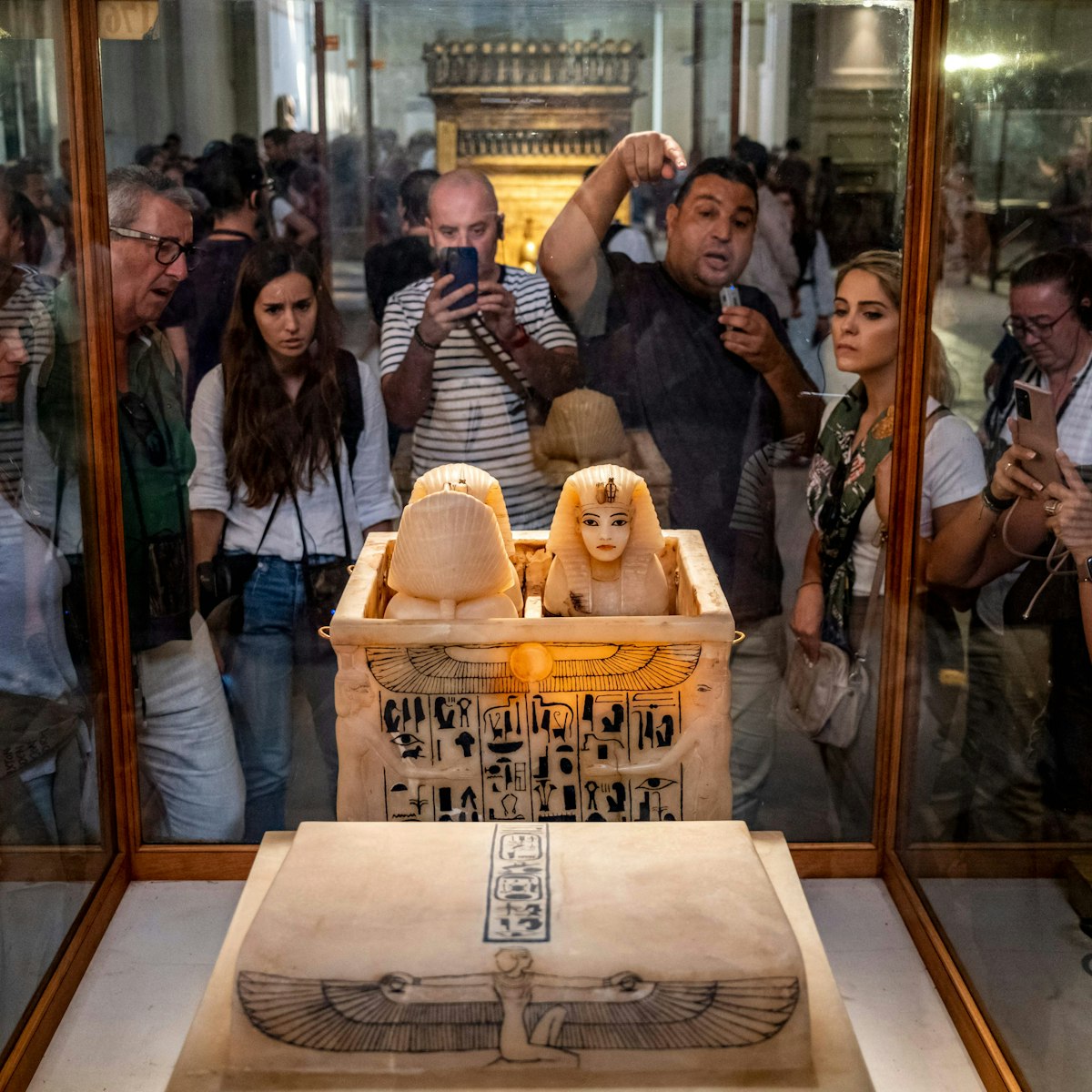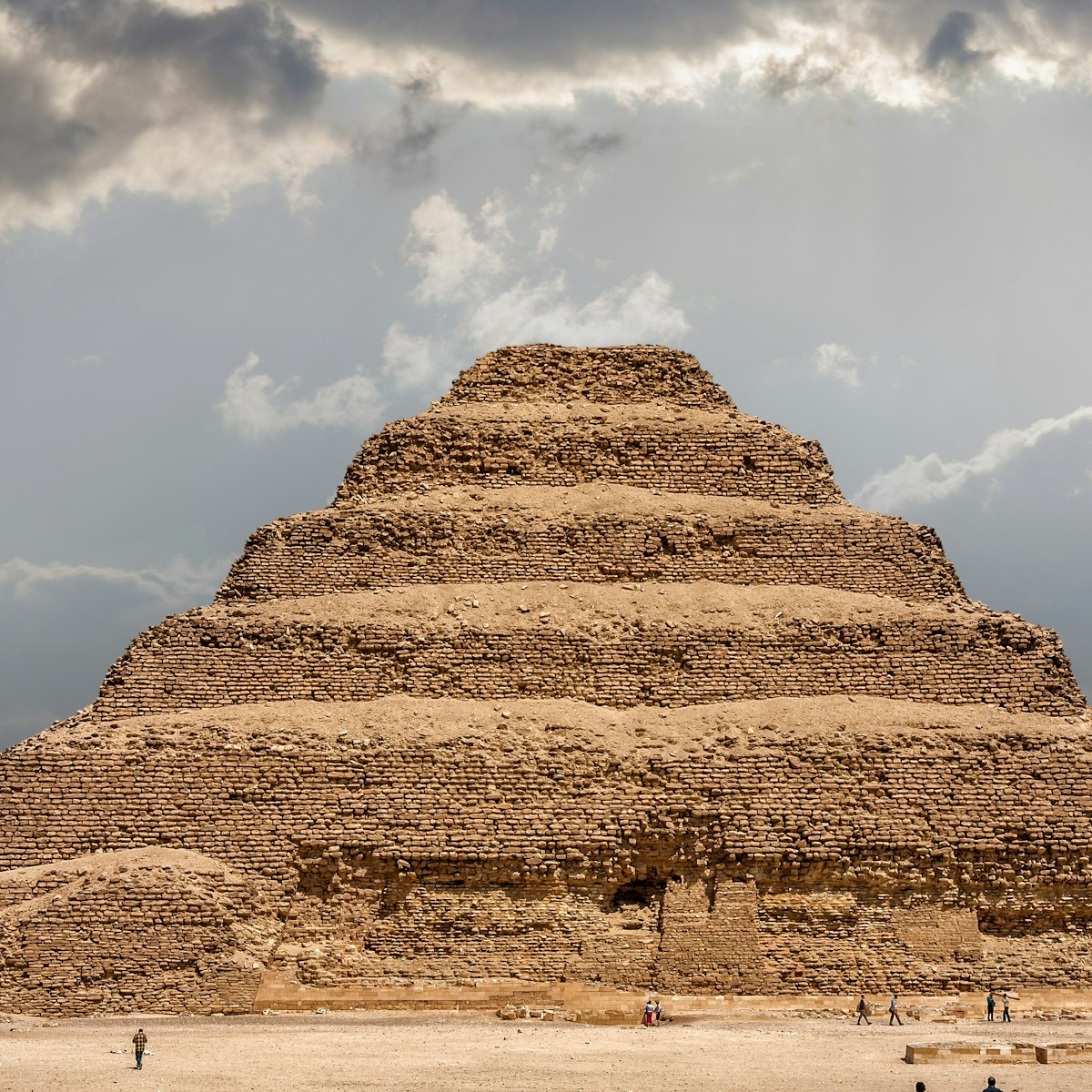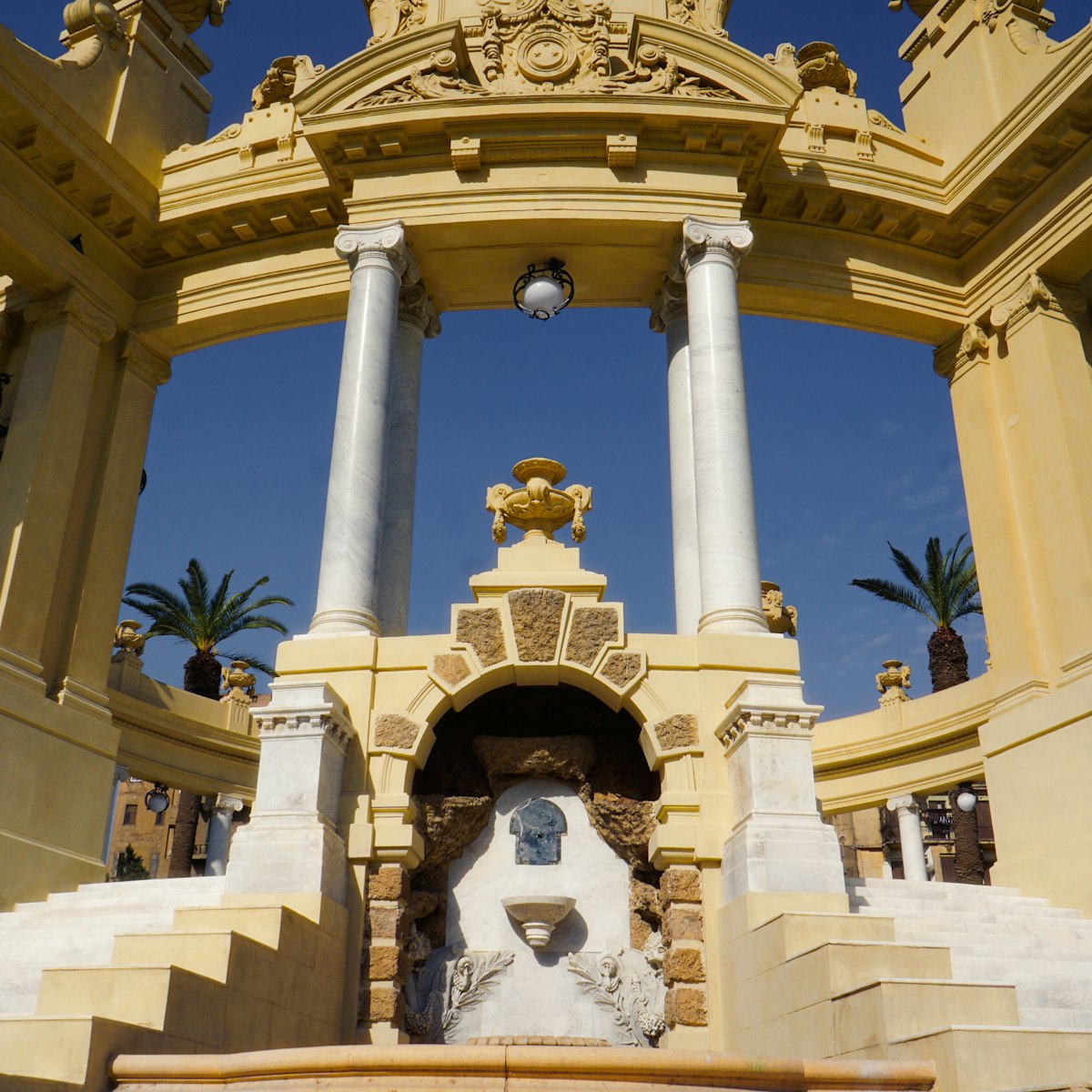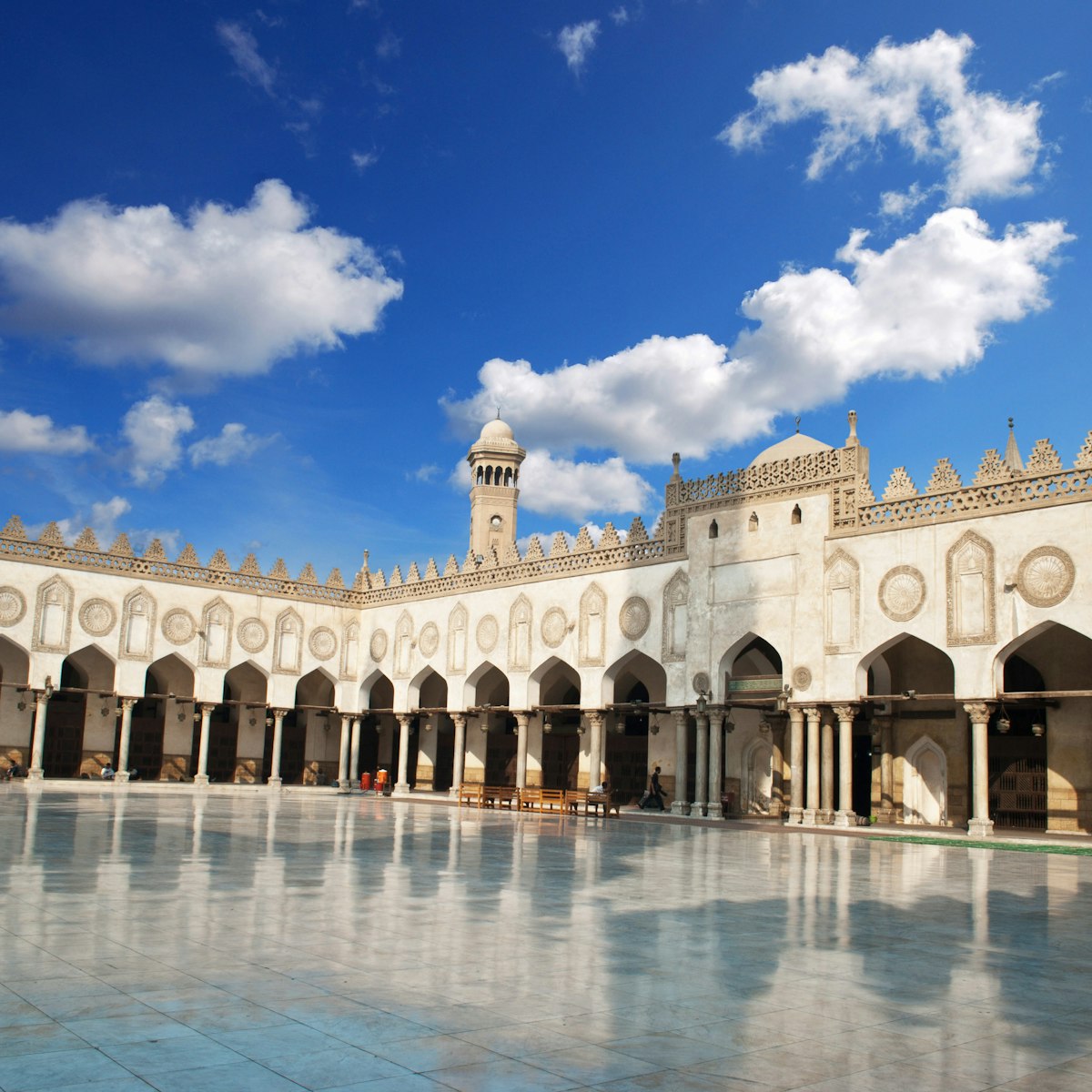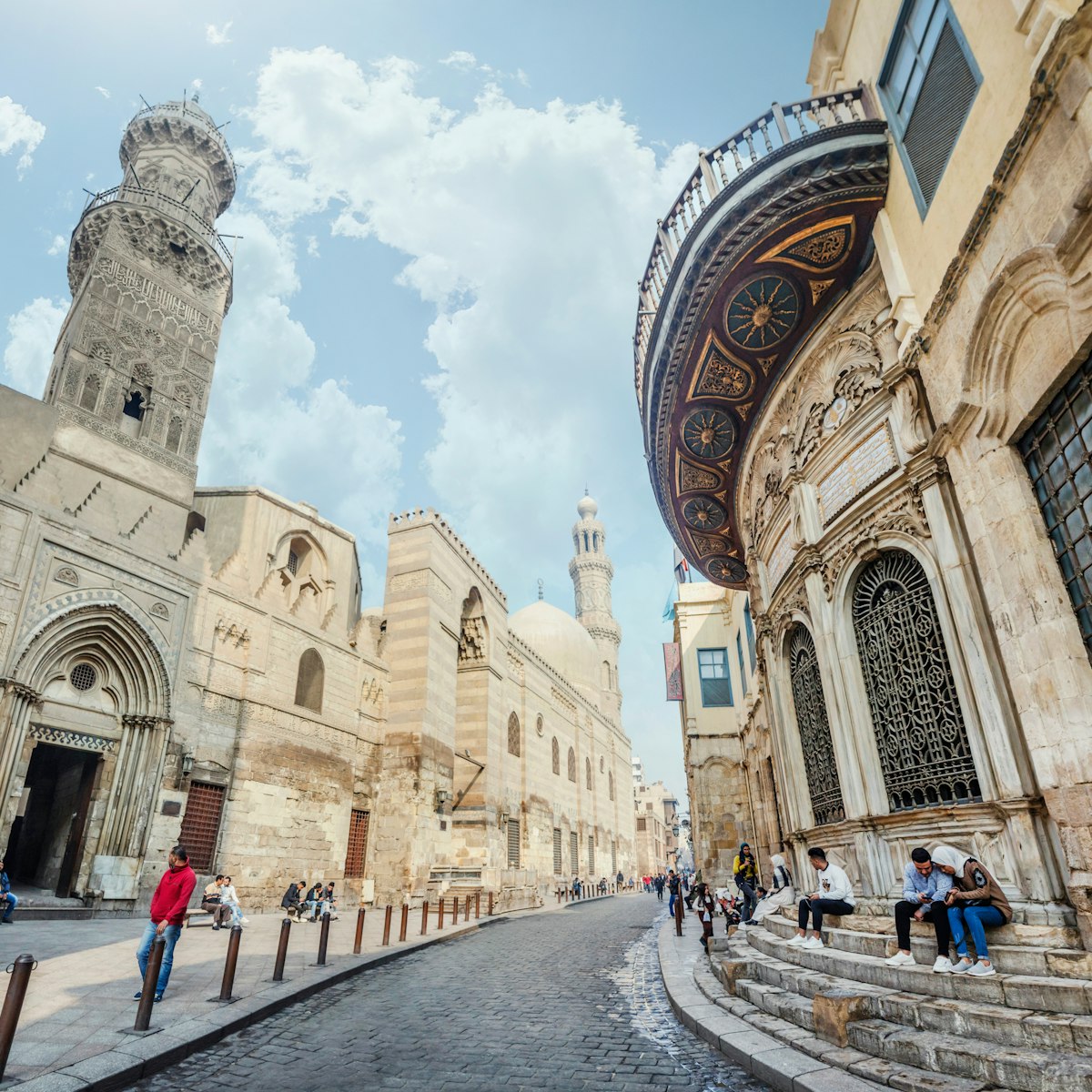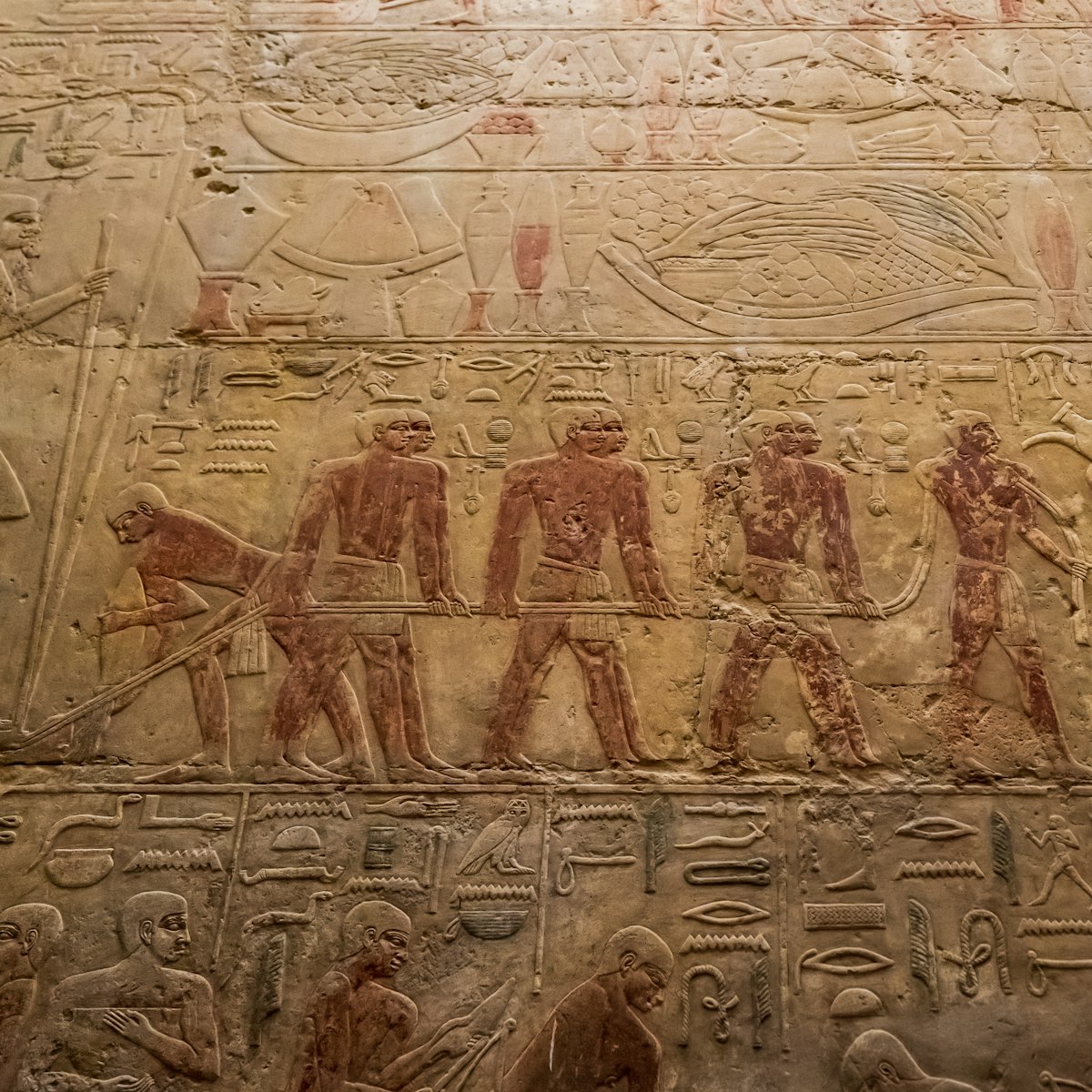Known in Arabic as Abu Al Hol (Father of Terror), this sculpture of a man with the haunches of a lion was dubbed the Sphinx by the ancient Greeks because it resembled their mythical winged monster who set riddles and killed anyone unable to answer them. A geological survey has shown that it was most likely carved from the bedrock at the bottom of the causeway during Khafre’s reign, so it probably portrays his features.
As is clear from the accounts of early Arab travellers, the nose was hammered off sometime between the 11th and 15th centuries, although some still like to blame Napoleon for the deed. Part of the fallen beard was carted off by 19th-century adventurers and is now on display in the British Museum in London. These days the Sphinx has potentially greater problems: pollution and rising groundwater are causing internal fractures, and it is under a constant state of repair.
Legends and superstitions about the Sphinx abound, and the mystery surrounding its long-forgotten purpose is almost as intriguing as its appearance. On seeing it for the first time, many visitors agree with English playwright Alan Bennett, who noted in his diary that seeing the Sphinx is like meeting a TV personality in the flesh: he’s smaller than one had imagined.
